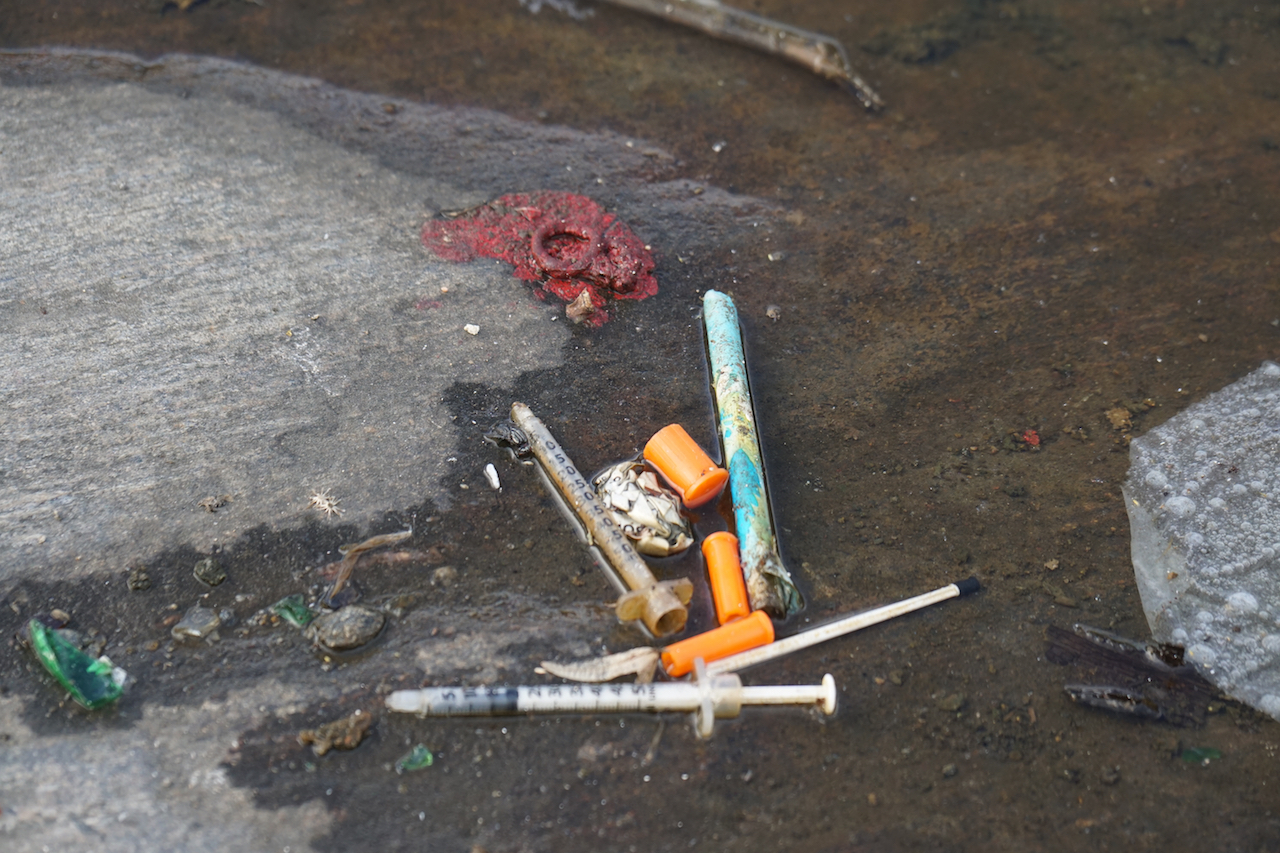
I didn’t see Chino go down but his friend did. He collapsed and cracked his head on the curb of the pavement by the entrance of St. Mary’s park near the basketball courts, just close enough to hear the echoes of a pickup game. According to Leidanett Rivera, a friend of his, he had just gotten out of rehab that day. His hair was freshly faded into a mohawk. His tolerance was shot. I ran toward him, anti-overdose medication in hand, my reporting partner for the day a few steps behind me. Rivera was in between us. Chino didn’t move. He wasn’t breathing.
There was blood on the pavement.
I was assigned to cover heroin use in Mott Haven. As a reporter I’m responsible for learning the ins and outs of the “beat,” the neighborhood and the people that call it home. I knew that there could be a possibility, however remote, that I might come across someone who was overdosing. A colleague of mine told me that Boom!Health, a harm reduction service provider, was offering training on preventing overdoses by administering Narcan. I decided to attend one of the classes.
Narcan is a brand name for Naloxone, an over the counter drug that delays the effect of an overdose. It will not reverse the overdose, but rather relieve someone long enough to seek medical attention. According to the NYC Health Department New Yorkers used Naloxone to save 400 lives in 2016. Roughly, three New Yorkers die from an overdose every day.
On a late afternoon in October I learned how to dispense doses of Narcan. I learned how to blast the medicine into the nostrils of someone overdosing. And then staffers at Boom! handed me a blue baggie. Inside the bag: a pair of gloves, a mouth barrier for administering CPR and two 4mg nasal doses of Narcan.
“Man you’re getting name brand stuff!” commented a trainer at Boom! who was not authorized to speak on the record. I put it in my backpack and walked out the door.
My job is to listen and observe. I talk to as many people as I can just to get a sense of who Mott-Haven is. Chino, which is what his friends in St. Mary’s Park call him, overdosed on a typical day.
On the day Chino overdosed I was walking near the AutoZone on E. 149th Street with another reporter. We saw a man with a CPR dummy and a folding table set up on the sidewalk. He was teaching anyone who walked by how to administer Naloxone. My colleague took the training.
He learned to call 911 but he should never say that it’s an overdose.
“If you say it’s an overdose they don’t come or they take longer. Say ‘unresponsive.’ They come faster,” the trainer said. Then he handed Boyer a box of Narcan and we were on our way to Saint Mary’s Park.
The park is one of the largest in the Bronx. It’s filled with towering trees, boulders and cresting hills. Walking paths cut through. In certain corners, tucked out of sight and in plain view, the park is littered with needles and syringes. Drug use is common here.
“Oh my God, look, either he caught an overdose or he’s drunk,” Rivera said right before we took off running.
She knelt next to Chino and asked him what he took. He didn’t respond. Trevor pulled out the brand-new box of Narcan he received only an hour earlier and handed it to Rivera.
She tore into the box as I was slipping my gloves on.
“What’s up, buddy?” I asked. There was no response.
Lady kept saying his name: Chino, Chino, Chino. I rubbed his sternum with my knuckles and leaned in to hear if he was breathing. A low gurgling came from his mouth. Chino was pale, but he wasn’t blue. Some spittle hung from the corners of his lips. Lady gave him one hit of Narcan into the left nostril.
I opened my dose and waited a few seconds to see if he would revive. He didn’t. I gave him another hit. Immediately, Chino’s eyes opened up. He was back but still out of it, weak and disoriented. The FDNY and NYPD arrived and took him away. Chino survived.
Two uniformed officers watched as the paramedics loaded Chino into a chair and carried him off.
One said, “We get a lot of overdoses here.”
Read our special series Opioid Addiction: Local Face on a National Crisis

